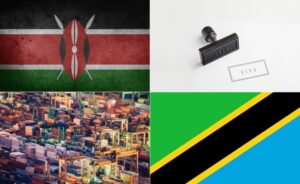Kenya and Tanzania on Friday called for a quick resolution of non-tariff barriers and review of the East African Community Common External Tariff (EAC CET).

Business and government leaders from the two countries said the barriers had hampered trade in the region as exports declined.
Confederation of Tanzania Industries (CTI) Chairman, Paul Makanza, said the two countries had enjoyed good relationships but trade between them had slowed down due to barriers.
“We hope to leverage on this renewed collaboration between the two countries to grow our economies.
“Both Kenya and Tanzania must eliminate non-trade barriers, and conclude the review of the EAC common external tariff,’’ Makanza said in a statement after a meeting organised by the Kenya Association of Manufacturers (KAM) and CTI.
KAM Chairman, Mucai Kunyiha, asked the EAC partner-states to create an enabling environment to drive industrialisation in the region by doing away with regulatory overreach that hindered the region’s competitiveness.
He added that Kenya should adopt the 35 per cent rate of EAC CET and resolve outstanding non-tariff barriers with Tanzania to drive industrial growth.
Read Also: High Praises For MV Ever Given Crew As The Ship Is Finally Released
Kenya’s High Commissioner to Tanzania, Dan Kazungu, said a recent visit by the President of Tanzania, Samia Suluhu, to Kenya heralded new dawn between the two nations.
He said this would help resolve outstanding non-trade barriers that hindered trade between the two countries.
Kenya’s Principal Secretary, Ministry of EAC, Kevit Desai, asked EAC states to embrace the “Buy East Africa, Build East Africa initiative”.
Kenya’s exports to Tanzania declined from 342.9 million U.S. dollars in 2016 to 294.9 million dollars in 2020 while its exports to the rest of the world grew from 5.7 billion dollars in 2016 to 6.02 billion dollars in 2020.
On the other hand, Tanzania’s exports to Kenya grew from 126.2 million dollars in 2016 to 258.2 million dollars in 2020, while its exports to the world grew from 4.4 billion dollars in 2016 to 5.2 billion dollars in 2020.
Kindly like us on Facebook
















Discussion about this post